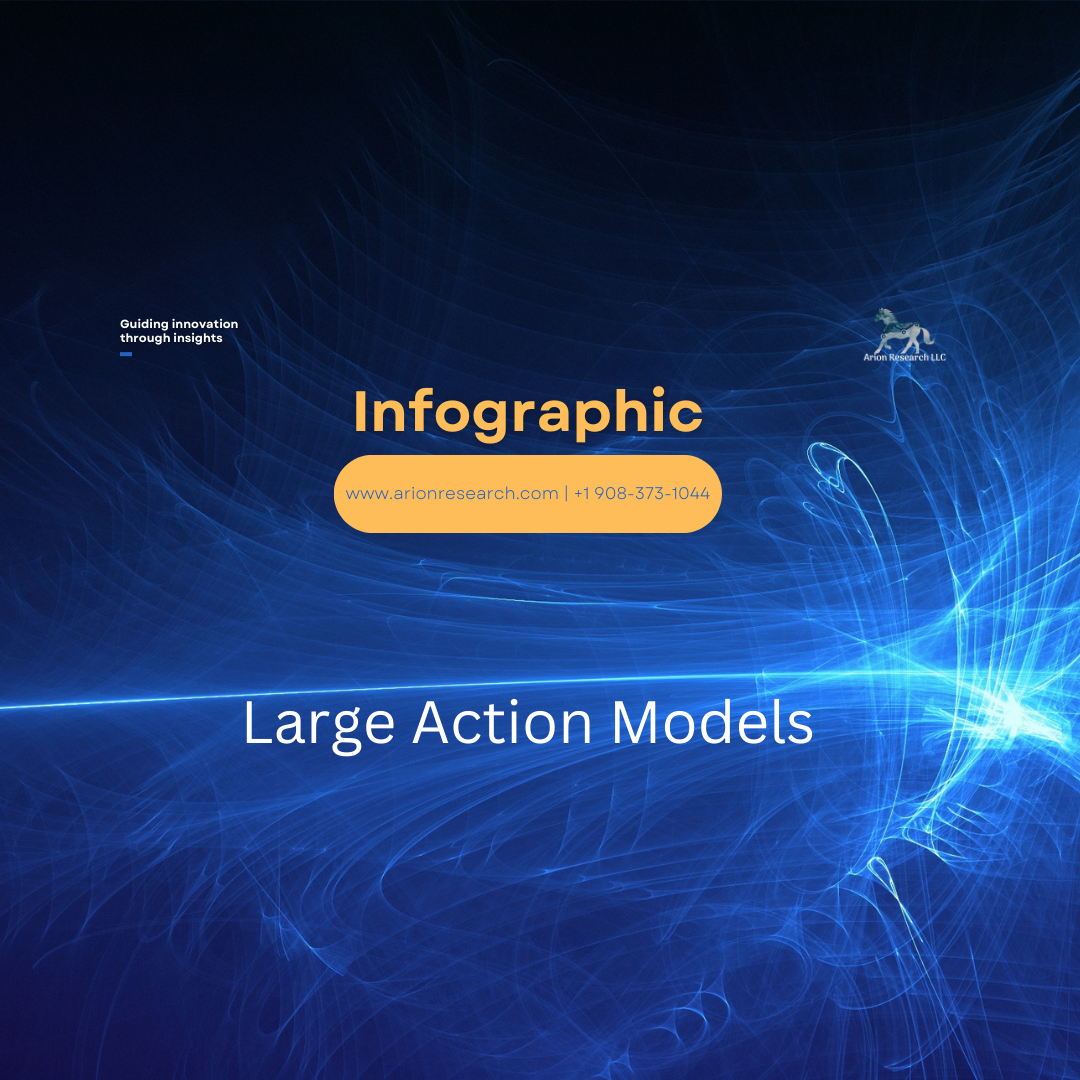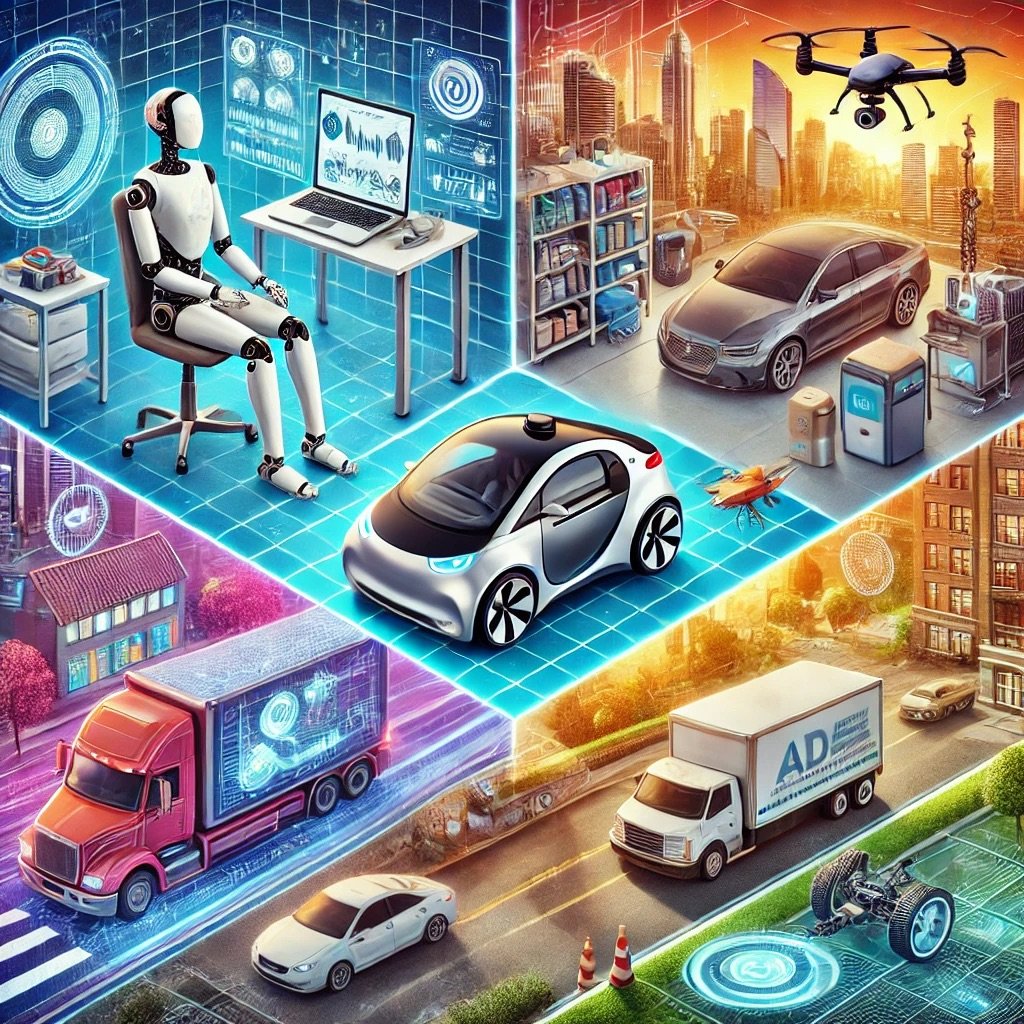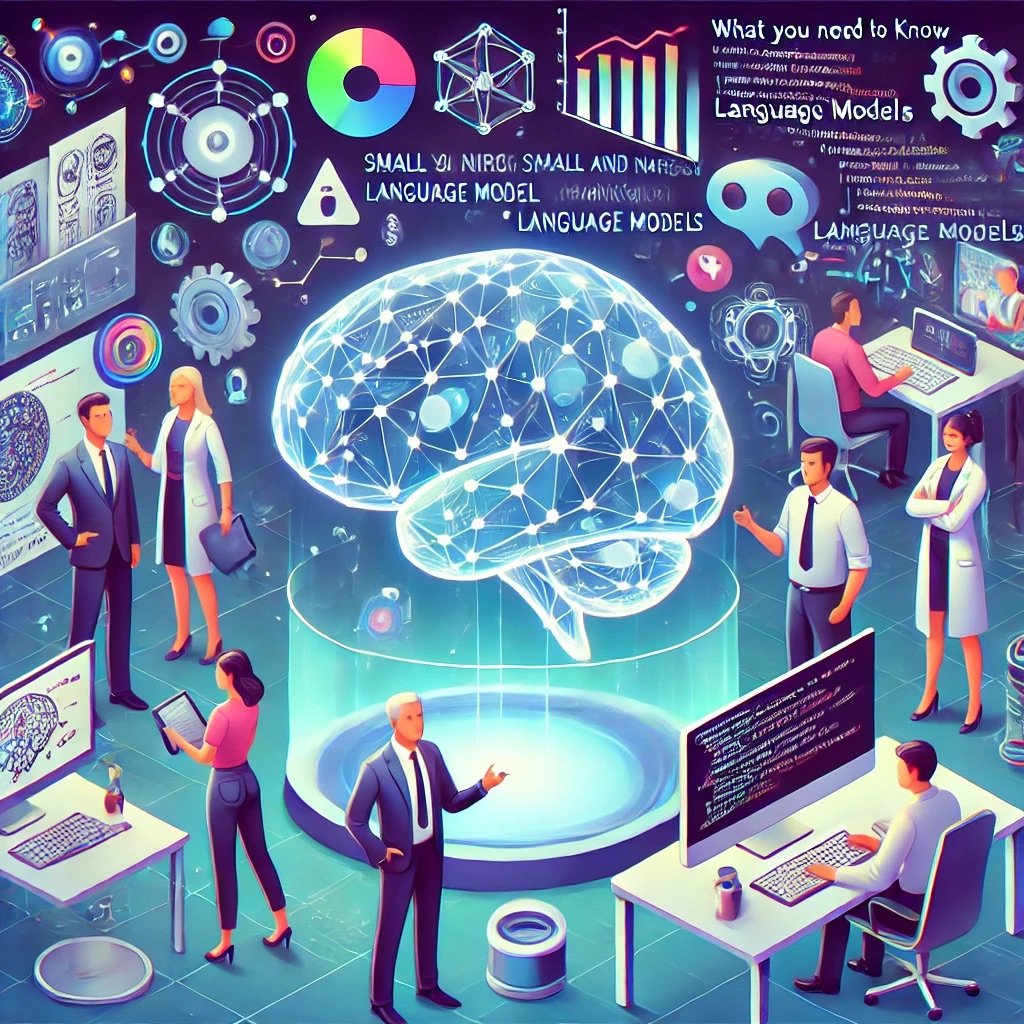
Generative AI Use Cases Infographic
The business use cases for generative AI are very diverse, with new applications of the technology popping up nearly weekly. To better understand the potential of generative AI, it’s useful to break it down into the major use categories, and then work down from there into more detail. The model is an attempt to capture the current use cases as categories.

California Senate Bill 1047, the “Safe and Secure Innovation for Frontier Artificial Intelligence Models” Act
The rapid growth of artificial intelligence (AI) has prompted governments around the world to grapple with how best to regulate the technology and provide a balance between safety and innovation. As AI systems become increasingly integrated into various industries—ranging from healthcare and finance to law enforcement and education—the need for regulatory frameworks that ensure safety, fairness, and accountability are urgent.

Assessing the Impact of AI Projects
The current business landscape is marked by a strong desire to adopt AI tools quickly, driven by the promise of transformative benefits such as increased efficiency, enhanced decision-making, and competitive advantage. However, many businesses are grappling with significant challenges in establishing a robust business case and accurately measuring the return on investment (ROI) for their AI projects. Here’s a closer look at these dynamics:

Are AI and Cybersecurity Concerns Pushing Companies to Hybrid Infrastructure?
Companies are increasingly adopting a hybrid infrastructure, which combines public cloud, private cloud, and on-premises systems, to balance flexibility, control, and security in their IT operations. Moving to hybrid infrastructure can optimize their IT operations by balancing the benefits of the cloud with the control and security of on-premises and private cloud environments. This approach offers the flexibility to adapt to various business needs, from regulatory compliance and cost management to performance optimization and disaster recovery.

Large Action Models Infographic
Large Action Models (LAMs) are a new advancement in AI that builds upon the capabilities of Large Language Models (LLMs). LAMs leverage a combination of existing AI technologies to bridge the gap between understanding language and taking action in the digital world.

Generative Customer Segmentation
Generative Customer Segmentation leverages generative AI to create highly detailed and nuanced customer segments. Unlike traditional segmentation methods that group customers based on broad characteristics like demographics, purchasing behavior, or psychographics, generative customer segmentation uses AI to dynamically analyze large amounts of data and generate segments that reflect intricate patterns and preferences of individual customers.

Why McDonald’s Failed AI Automated Order Taking Project Isn’t an Example of Generative AI Failure
I keep seeing / hearing this narrative about the decision to discontinue the McDonald’s Automated Order Taking (AOT) system project, so I feel the need to jump in. The answer to that question is really, really simple. There is no generative AI in the McDonald’s AOT system. Logistically, even if it made sense that there be some use of generative AI, the solution was designed well before OpenAI released ChatGPT, or in other words, generative AI was not available when the system was designed. The recently announced Yum! Brands Taco Bell AOT initiative is also generative AI free, in case you wondered. There are some interesting lessons to be learned from both the McDonald’s and Taco Bell projects though.

The Role of Specialized Language Models
While LLMs have demonstrated remarkable capabilities, their general nature often hinders their effectiveness in domain-specific applications. LLMs have some shortcomings including Lack of Domain Expertise, Data Scarcity, Knowledge Grounding, Computational Costs and Ethical Concerns. Specialized language models are AI models that are trained on specific types of data or for specific tasks, rather than being general-purpose like models such as GPT-4. These models are designed to excel in particular domains by incorporating specialized vocabulary, jargon, context, and nuances relevant to that field. Specialized models have the potential to overcome many of the shortfalls on LLMs when applied in a specific task or context.

Redefining Field Service with AI and IoT
Together, AI, generative AI, and IoT create a powerful synergy that transforms field service management from a reactive to a proactive model. They enable businesses to anticipate and address issues before they escalate, optimize resource utilization, and provide personalized, efficient service to customers. This technological integration not only addresses the traditional challenges of field service but also sets new standards for excellence in customer experience.

Ensemble RAG: Improving Accuracy in Generative AI
Ensemble Retrieval-Augmented Generation (Ensemble RAG) is an advanced technique in natural language processing that combines the strengths of retrieval-based and generation-based models to enhance the quality and accuracy of generated text. This method is rooted in the Retrieval-Augmented Generation (RAG) framework, which itself integrates a retrieval mechanism with a generative model to produce more contextually relevant and informative responses.

Business Use Cases for Autonomous AI Agents
The diverse range of applications for autonomous AI agents demonstrates their transformative potential across multiple industries. From healthcare and transportation to manufacturing and finance, these intelligent systems are revolutionizing how we approach complex tasks and decision-making processes. By leveraging advanced features such as real-time data processing, machine learning, and adaptive decision-making algorithms, autonomous AI agents are enhancing efficiency, accuracy, and responsiveness in ways that were previously unattainable. Their ability to operate independently with minimal human intervention opens up new possibilities for innovation and problem-solving in both critical and everyday scenarios.

Understanding Business Decision Data
Companies deal with a wide variety of data sources to support business decision-making. The wide range of data categories include existing company data, internal systems data, web-based real-time data, research and third-party data, and human-sourced data. There are many challenges in managing disconnected data silos and it is important for companies to ensure high data quality. Technological solutions like data lakes and data federation can improve data accessibility and integration. Companies must incorporate real-time web-based data and third-party research into business analytics as well. Special attention needs to be given to human-sourced data, and its unique value, as well as the challenges in capturing and integrating it effectively. Diverse data sources are critical in informing business strategies, enhancing customer experiences, and driving competitive advantage in today's data-centric business landscape.

Autonomous AI Agents
Autonomous AI agents are systems designed to operate independently with minimal human intervention, making decisions and taking actions based on their programming and real-time data. These agents are equipped with capabilities such as machine learning, decision-making algorithms, and often sensory technologies like vision or speech recognition. Autonomous AI agents can perform tasks without human intervention; learning from data, making decisions, and taking actions based on their learning. Autonomous AI agents can be used in various business applications such as customer service, sales, marketing, supply chain management, and more.

Data Governance to Support AI Initiatives
Artificial Intelligence (AI) has become an integral part of many businesses, transforming the way they operate and compete. However, for AI solutions to be effective and deliver the desired results, they require high-quality, accurate, and consistent data. A strong, comprehensive data governance program is essential for ensuring the quality and integrity of the data used to train and operate AI systems. A robust data governance program helps businesses manage their data effectively, ensuring it is secure, compliant, and aligned with the organization's goals. A strong data governance program not only improves the performance of AI solutions but also helps businesses gain insights from their data, make informed decisions, and stay competitive in the market.

Leveraging Generative AI and Enterprise Collaboration Solutions to Transform Business Applications
The way we work with each other and with enterprise systems is evolving, as more businesses turn to generative artificial intelligence (AI) and enterprise collaboration solutions. These new tools transform the way we interact and use business applications, effectively becoming a new user interface (UI) and experience (UX). Integrating generative AI with enterprise collaboration solutions like Slack can lead to a more integrated, productive, and efficient UX, as well as improved knowledge sharing and decision-making. There are ethical and privacy concerns that must be considered when implementing generative AI of course, and the importance of ongoing training and maintenance to ensure the accuracy and fairness of the AI's outputs is an integral part of using the tools effectively. By leveraging these powerful tools, businesses can stay competitive and achieve their goals in a rapidly changing world.

What You Need to Know about Small and Narrow Language Models
Language models (LMs) are artificial intelligence (AI) systems designed to understand, generate, and manipulate human language. These models come in various sizes, each offering distinct advantages. Small models are computationally efficient, making them ideal for quick tasks and deployment on devices with limited resources. Medium-sized models strike a balance between performance and efficiency, suitable for a wide range of applications. Large models, while more resource-intensive, excel in complex language understanding and generation tasks, often producing more nuanced and contextually appropriate outputs. In contrast, narrow LMs are designed to perform well on a specific set of tasks or within a particular domain, rather than having the broad, general-purpose capabilities of more extensive language models. The choice of model size depends on the specific use case, balancing factors such as accuracy, speed, use case and resource availability.

Cost-Benefit Analysis of AI Projects: What IT Managers Need to Know
As organizations increasingly turn to artificial intelligence (AI) to drive innovation and efficiency, IT leaders must be able to effectively evaluate the economic impact of these initiatives. By learning the process of financial evaluation for AI projects, IT managers position themselves as strategic business partners within their organizations. This skill enables them to prioritize projects effectively, allocating limited resources to initiatives that promise the highest return on investment (ROI). It equips them with the ability to build compelling business cases, articulating the value of AI projects to executives and other stakeholders in financial terms they understand and appreciate. It also supports ongoing evaluation and continuous improvement of business outcomes by measuring projects against agreed benchmarks.

AI First: Changing the Customer Service Paradigm
From digital transformation to digital first and now artificial intelligence (AI) first, the way companies are approaching both their business strategy and IT strategy continues to evolve. Digital first and AI first are similar, although you could probably think of AI first as a component of digital first. As more enterprise providers embed AI into their product portfolio, having an overall AI strategy is a very important part of a successful business strategy. In customer service this is particularly relevant, with many providers converging on everything customer service from call centers to field service. But what does an AI first customer service strategy look like?

Total Monetization: The Impact of AI on Software Pricing and Packaging
AI, particularly generative AI, is having an outsized impact on everything from art to green tech, and dominates most tech conversations lately (well, over the last 18+ months anyway). The one area that I don’t hear enough about is how technology providers, particularly SaaS and cloud providers, are scrambling to figure out new pricing and packaging models that will capture the value the new solutions bring while ensuring that margins are not disrupted (or maybe I should say destroyed) with the high costs of operating and scaling AI offerings, particularly generative AI. By offering advanced AI functionalities, companies can differentiate their products in crowded markets. This differentiation can be a key driver in packaging design, helping companies to highlight unique features that justify premium pricing or attract a specific segment of customers.

Human in the Loop and Intelligent Automation
Business use of generative AI, artificial intelligence (AI) and machine learning (ML) has rapidly increased over the past couple of years. With this growth, and the increased use of these technologies with and embedded in other enterprise applications, the ability to combine AI with automation technologies to provide effective and trustworthy methods of automating many business tasks has great potential. These new abilities can provide many productivity gains, and revenue and margin upside, and as such should be an important part of your digital first strategy. Generally companies are using two approaches to embedding these technologies into their business functions and processes, Human in the Loop (HITL) and Intelligent Automation (IA). Both methods aim to enhance efficiency and productivity but differ significantly in their reliance on human intervention.
